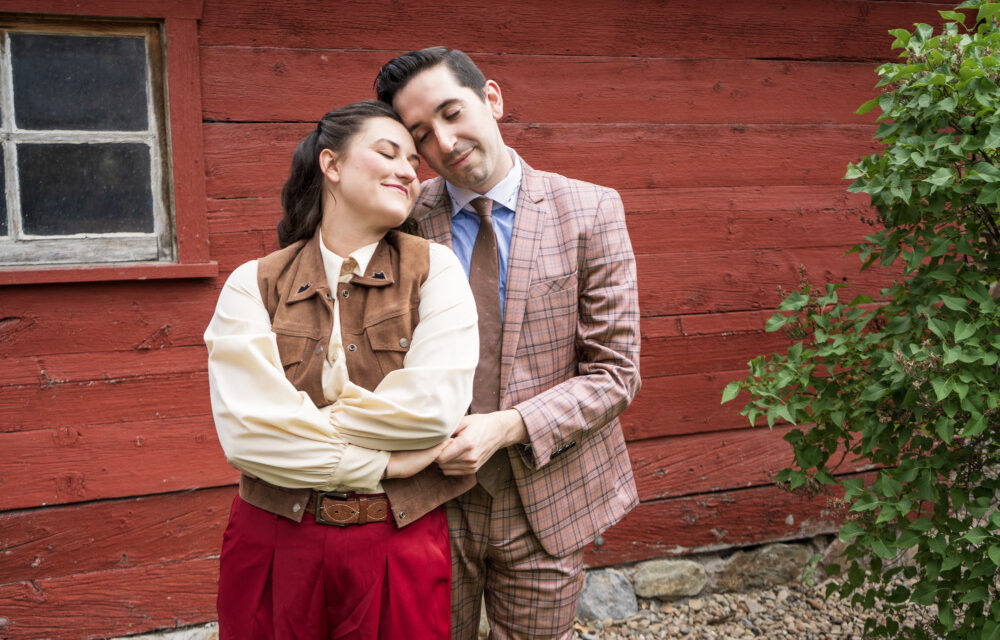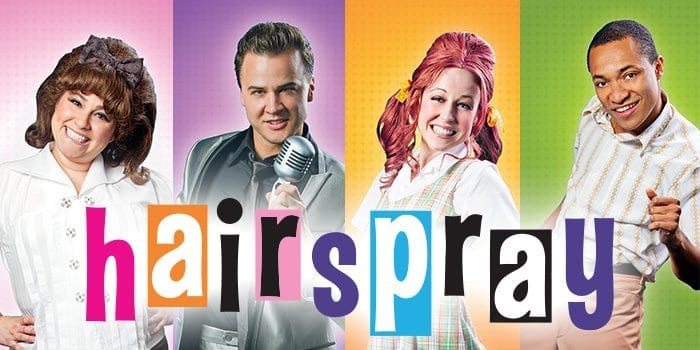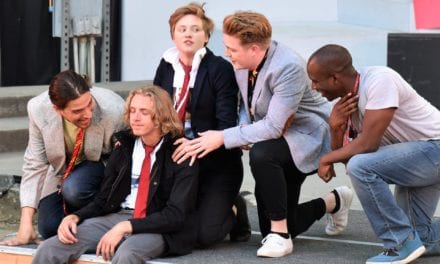OREM — Crazy For You is an ode to the immortal songwriter George Gershwin, and uses many of his famous tunes to retell an old tale. Based on the 1930 musical Girl Crazy, the 1992 Broadway musical (with a book by Ken Ludwig) features one big dance and musical number after another. While far from a musical revue (it actually has a plot!), in the end, the story matters little compared to the sheer force of its musical sequences.
Billed as “The Gershwin Song & Dance Spectacular”, SCERA’s outdoor production of Crazy For You will appeal to those who enjoy seeing a musical at twilight on a beautiful warm summer day. The venue, which I’d never visited despite living in Provo for four years and Utah for 25, consists of a large grassy hill, smartly divided down the middle to separate blanket patrons from those who brought their own chairs. (There is also reserved seating toward the front.) The stage itself is massive. Even with two fake proscenium arches, the large cast had plenty of space to dance and tumble.
The big-man-in-a-small-town plot, which is admittedly more than a little cliched and contrived, features a New York banker named Bobby who is sent to rural Nevada to foreclose on a theater—except when he arrives, he falls in love with the postmistress, and the town rallies to save the theater. Gerswhin’s tunes, which brim with big city energy, don’t always seem like a natural fit for rural Nevada, but the beloved musical won several Tonys back in the day and has been popular with audiences ever since, so what do I know?
Cam Bronson gave a plucky, likable performance as Bobby. Through all his dancing and movements, Bronson stayed impressively in character—which was slightly awkward and moonstruck—and resisted the temptation to take things over the top. His dancing featured clean lines and conservative movements and refreshing restraint. Vocally, Bronson displayed an appealing, warm and clean musical theater voice with a nice lift to rising phrases, as in “I Can’t Be Bothered Now” when he sang “Who cares?”
Aubrey Jackson gave a strong performance as Bobby’s love interest, Polly. She portrayed Polly as a tomboy with consistent tomboyish movement and an effective Western accent—the way she dragged the vowel on “us” and used chest voice for “whole life” were two small but marvelous examples of her dialect work. Jackson displayed an excellent singing voice with consistent, clear high notes—particularly in “Someone to Watch Over Me”—and a lovely vibrato.
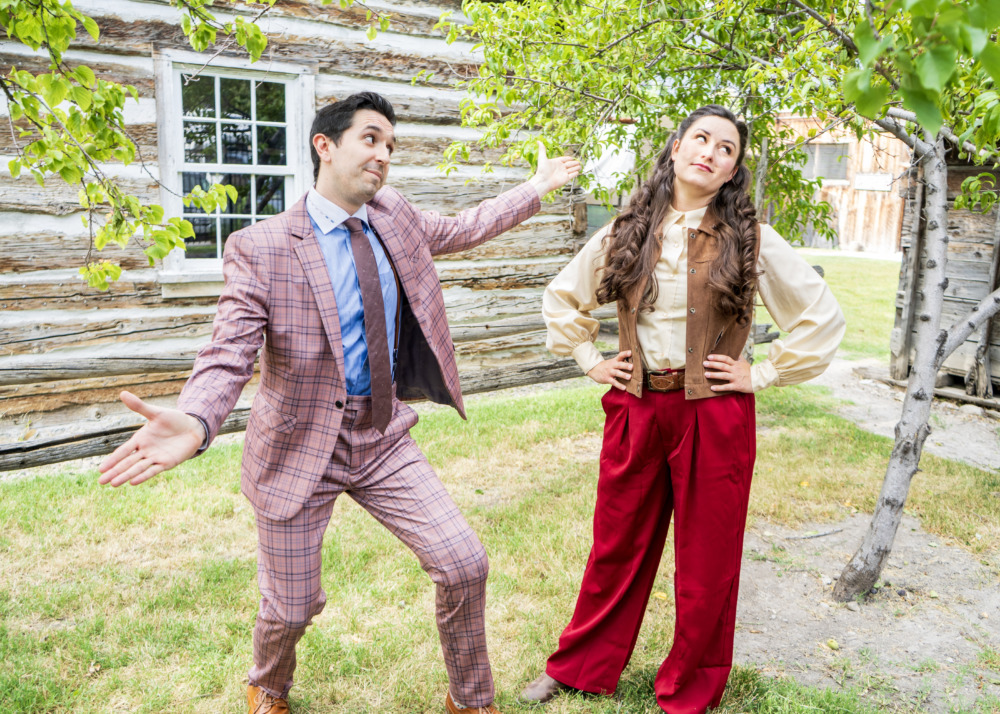
Cam Bronson and Aubrey Jackson in SCERA’s “Crazy for You”. Show closes July 20.
In supporting roles, Capri Gallacher shone brightly as dimwitted dancer Patsy. Gallacher showcased poise, excellent posture and her ad libs were a highlight of the night. Other minor roles were a bit more uneven. The production didn’t quite make it clear why Irene (played by Lauren Billings) was so terrible that Bobby would want to run from her. Antagonist saloon owner Lank also seemed a bit undefined. Daniel Bradley looked great in the role—tall and imposing like a bad guy should be. However, the choice to place his vocal delivery in a high, gravelly “head voice,” with ample use of vocal cracking, seemed to weaken the character and the performance. The large chorus was talented, committed and hit their marks in the show’s many dance numbers. I particularly spotted some excellent high kicks from the cowboys (that extension, wow).
Director Allison Books and choreographer Rebecca Boberg staged many fun moments throughout the over two-hour production. Bobby and Polly’s meet-cute number “Shall We Dance” was, well, cute—with an accidental handhold—and the number’s choreography effectively progressed their romance. The later gender-reverse of Polly (the tomboy) lifting Bobby (the sensitive outsider) was another fun moment. The showstopper, though, was “Slap That Bass,” an elaborate, full-cast dance number which used rope props to transform female dancers into pluckable basses.
Scott Sackett’s scenic design dazzled. The Deadrock Nevada set was dope—well painted and distressed, especially the General Store which featured a cool broken awning and yellowing door. The store’s wooden walls, pillars and bannister were beautiful and effective at setting the stage of the sleepy Western town.
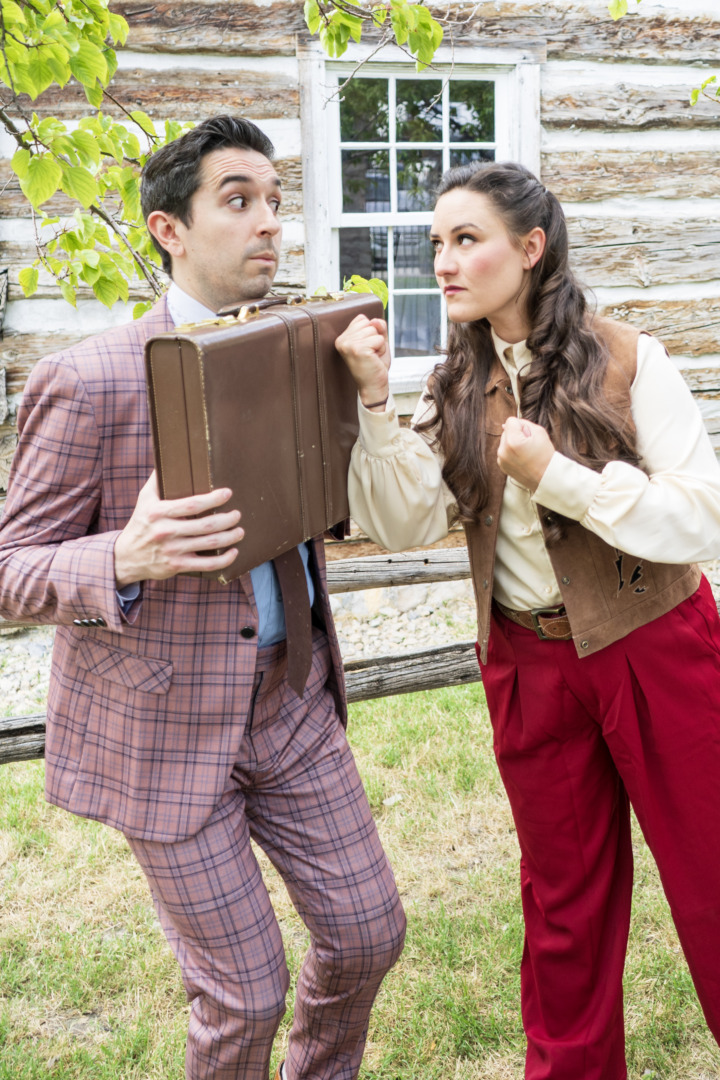
Cam Bronson and Aubrey Jackson in SCERA’s “Crazy for You”
Costumes by Brodee Ripple were also effective, and conveyed the growth of the characters. Polly went from overalls early in the show, to a subtle Western outfit of loose red trousers, to eventually softening to a feminine pastel green dress, and eventually sequenced sea-green formal dress. Bobby likewise progressed from tacky plaid salmon suit to a smart gray jacket and sea-green bow tie matching Polly’s costume.
Other highlights of the costume design included the excellent fit of Bobby’s costumes (superb) and the ace card decorating the hat of a town gambler, which was a nice touch. Toward the end of the production, after Irene falls for Lank, she appears wearing the same pattern as his restaurant’s tablecloths, an impressive way to show her influence on the town, and vice versa.
The quality of the microphones was strong, although a few occasions of backstage sound were heard (Chase Elison was the sound and lighting manager). The use of a gobo sliding downstage into the audience on “Slap That Bass” was an effective moment in Elizabeth Griffiths’ lighting design.
Overall, SCERA’s production is a fun summer musical—a high-quality community production with exciting dancing and great singing from its leads. I recommend it to musical lovers in the area looking for a way to wind down a hot summer evening.

This review was supported by a generous grant from the Orem CARE program.

